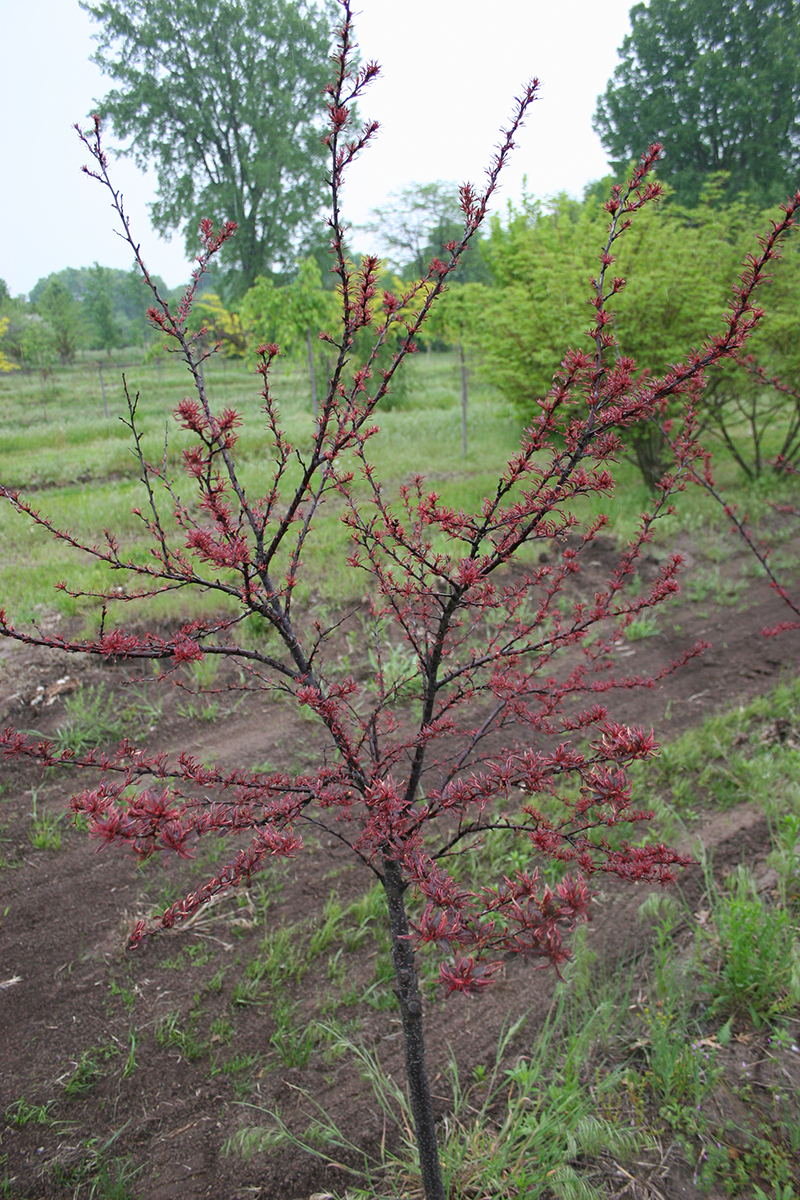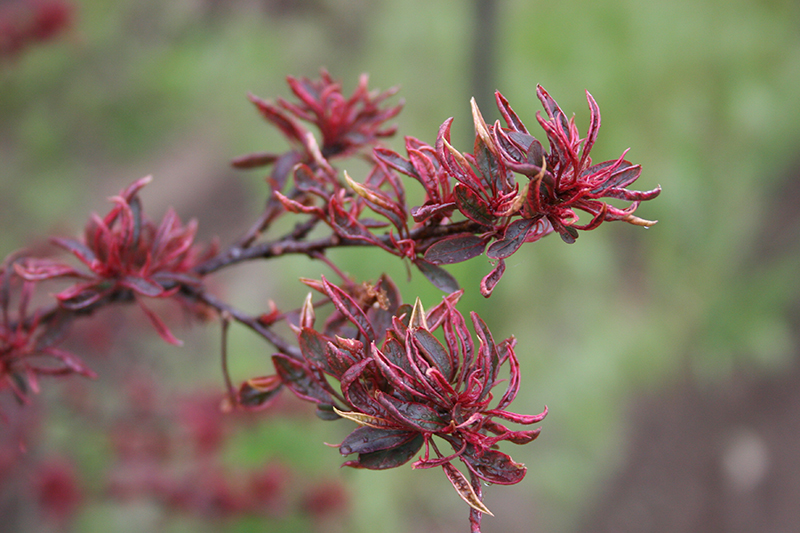Picture of the week
May 15, 2023
Residual Roundup Damage
Mike Mickelbart, Mike Dana, Janna Beckerman, Purdue University
Herbicide application must be done very carefully around landscape plants. Special care must be taken with broad-spectrum herbicides (those that will kill a wide range of plants). Roundup (glyphosate) is a broad-spectrum, systemic herbicide. Simply put, this means that Roundup can kill a lot of plants because the plant takes up the herbicide and transports it to the roots and other parts of the plant. This is why Roundup is such an effective herbicide. While many herbicides do damage to the parts of the plant they come in direct contact with, Roundup actually "penetrates" the entire plant and kills it to the roots. This is great if you are trying to control dandelions, but not so great if you accidentally spray your trees and shrubs with Roundup.
The picture shown is a 'Prairie Fire' crabapple. These trees were slow to leaf out and when they did, the leaves were small and distorted. These symptoms are classic herbicide damage symptoms. Roundup is used at this nursery to control a wide range of weeds within the rows. However, the nursery manager hadn't sprayed any herbicides since last year. So what happened? Most likely, the trees took up the Roundup last year, but underwent fall dormancy, and didn't show symptoms right away. The Roundup would have been transported to various parts of the plant, including the roots. When the trees leafed out this year—that's when the damage became evident.
click image to enlarge



